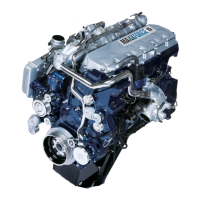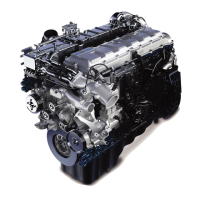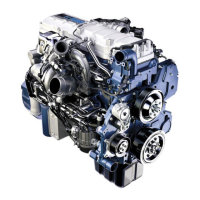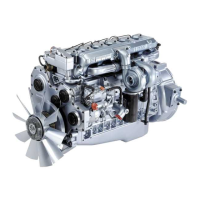
Do you have a question about the Navistar MaxxForce 15 and is the answer not in the manual?
Defines Warning, Caution, and Note terms for safety context.
General safety practices for work area and personal protective equipment.
Initial checks for engine and aftertreatment system operational status before further diagnostics.
Diagnosing the AMS actuator using ServiceMaxx™ software and specific tests.
Procedure to test for exhaust system restriction using specific diagnostic tools and values.
Identifying active fault codes related to SPN 3719/3936 using diagnostic software.
Initial check for active fault codes other than SPN 3719 using diagnostic software.
Performing a snap acceleration test to check the DPF for cracks or internal damage.
Analysis of a good Air Management System test graph from ServiceMaxx™ software.
Explains a bad Air Management System test graph and its implications for the aftertreatment system.
Analysis of ICP and ICPD signal values during a 0-60 MPH test for system validation.
Analysis of engine speed, load, IMP, EBP, and APP1 during a 0-60 MPH test.
Analysis of normal exhaust gas temperatures indicating an efficient DOC and unrestricted AFI.
Analysis of erratic exhaust gas temperatures indicating a contaminated DOC or faulty AFI.
Analysis of low exhaust gas temperatures indicating a restricted AFI due to restricted fuel flow.
Describes the functions of the aftertreatment system for specific engine models.
Details the function of the Diesel Oxidation Catalyst (DOC) and Diesel Particulate Filter (DPF).
Lists common aftertreatment system fault codes (SPN/FMI) and their possible causes.
Illustrates the sequence of events and operator responses for aftertreatment system issues.
Initial checks for engine and aftertreatment system operational status before further diagnostics.
Diagnosing the AMS actuator using ServiceMaxx™ software and specific tests.
Performing a snap acceleration test to check the DPF for cracks or internal damage.
Clearing SPN 3719 fault codes using the OBFCT test via diagnostic software.
Checking for active fault codes other than SPN 3719 using diagnostic software.
Performing a snap acceleration test to check the DPF for cracks or internal damage.
Analysis of a good Air Management System test graph from ServiceMaxx™ software.
Explains a bad Air Management System test graph and its implications for the aftertreatment system.
Analysis of FRP and FRPD signal values during a Lug Down Test for system validation.
Analysis of engine speed and TC1TOP signal values during a Lug Down Test.
Analysis of normal exhaust gas temperatures indicating an efficient DOC and unrestricted AFI.
Analysis of inverted exhaust gas temperatures indicating an inefficient DOC.
Analysis of low exhaust gas temperatures indicating a restricted AFI due to restricted fuel flow.
Describes the functions of the aftertreatment system for specific engine models.
Details the Air Control Valve (ACV) assembly and its critical role in aftertreatment system operation.
Lists common aftertreatment system fault codes (SPN/FMI) and their possible causes.
Illustrates the sequence of events and operator responses for aftertreatment system issues.
Explains conditions that inhibit regeneration and how to check them.
Lists the required conditions for an active regeneration cycle to occur.
Guidelines for reusing Diesel Oxidation Catalyst (DOC) and Diesel Particulate Filter (DPF).












